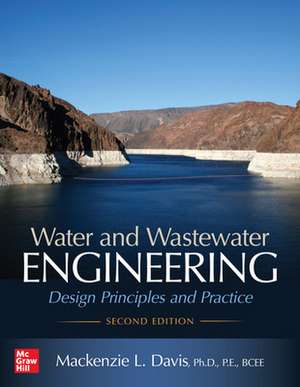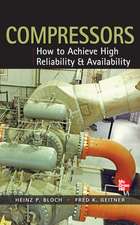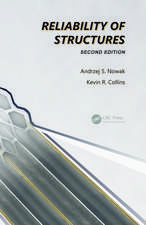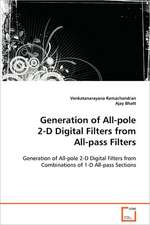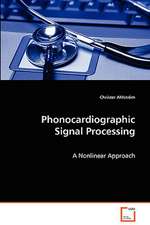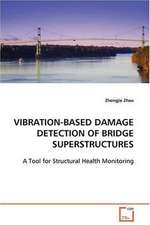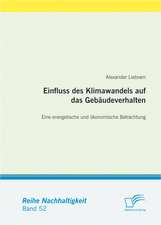Water and Wastewater Engineering: Design Principles and Practice, Second Edition
Autor Mackenzie Davisen Limba Engleză Paperback – 30 sep 2019
A Fully Updated, In-Depth Guide to Water and Wastewater Engineering
Thoroughly revised to reflect the latest advances, procedures, and regulations, this authoritative resource contains comprehensive coverage of the design and construction of municipal water and wastewater facilities. Written by an environmental engineering expert and seasoned academic, Water and Wastewater Engineering: Design Principles and Practice, Second Edition, offers detailed explanations, practical strategies, and design techniques as well as hands-on safety protocols and operation and maintenance procedures. You will get cutting-edge information on water quality standards, corrosion control, piping materials, energy efficiency, direct and indirect potable reuse, and more.
Coverage includes:
• The design and construction processes
• General water supply design considerations
• Intake structures and wells
• Chemical handling and storage
• Coagulation and flocculation
• Lime-soda and ion exchange softening
• Reverse osmosis and nanofiltration
• Sedimentation
• Granular and membrane filtration
• Disinfection and fluoridation
• Removal of specific constituents
• Water plant residuals management, process selection, and integration
• Storage and distribution systems
• Wastewater collection and treatment design considerations
• Sanitary sewer design
• Headworks and preliminary treatment
• Primary treatment
• Wastewater microbiology
• Secondary treatment by suspended growth biological processes
• Secondary treatment by attached growth and hybrid biological processes
• Tertiary treatment
• Advanced oxidation processes
• Direct and indirect potable reuse
Preț: 639.31 lei
Preț vechi: 830.28 lei
-23% Nou
Puncte Express: 959
Preț estimativ în valută:
122.34€ • 130.82$ • 101.100£
122.34€ • 130.82$ • 101.100£
Carte disponibilă
Livrare economică 27 martie-10 aprilie
Livrare express 12-18 martie pentru 86.15 lei
Preluare comenzi: 021 569.72.76
Specificații
ISBN-13: 9781260132274
ISBN-10: 1260132277
Pagini: 1136
Dimensiuni: 196 x 236 x 48 mm
Greutate: 2.13 kg
Ediția:2
Editura: McGraw Hill Education
Colecția McGraw-Hill
Locul publicării:United States
ISBN-10: 1260132277
Pagini: 1136
Dimensiuni: 196 x 236 x 48 mm
Greutate: 2.13 kg
Ediția:2
Editura: McGraw Hill Education
Colecția McGraw-Hill
Locul publicării:United States
Cuprins
Preface
Professional Advisory Board for the Second Edition
Professional Advisory Board for the First Edition
1 The Design and Construction Processes
1-1 Introduction
1-2 Project Participants
1-3 The Professional–Client Relationship and the Code of Ethics
1-4 Responsible Care
1-5 Overall Design Process
1-6 Overall Construction Process
1-7 Hints from the Field
1-8 Chapter Review
1-9 Problems
1-10 Discussion Questions
1-11 References
2 General Water Supply Design Considerations
2-1 Water Demand
2-2 Water Source Evaluation
2-3 Water Quality
2-4 Evaluation of Process Options
2-5 Plant Sizing and Layout
2-6 Plant Location
2-7 Chapter Review
2-8 Problems
2-9 Discussion Questions
2-10 References
3 Intake Structures
3-1 Introduction
3-2 Design Elements
3-3 Design Criteria
3-4 Operational Considerations
3-5 Operation and Maintenance
3-6 Chapter Review
3-7 Problems
3-8 Discussion Questions
3-9 References
4 Wells
4-1 Introduction
4-2 Design Elements
4-3 Well Protection
4-4 Well Design
4-5 Chapter Review
4-6 Problems
4-7 Discussion Questions
4-8 References
5 Chemical Handling and Storage
5-1 Introduction
5-2 Redundancy and Capacity Provisions
5-3 Delivery, Handling, and Storage
5-4 Chemical Feed and Metering Systems
5-5 Chemical Compatibility
5-6 Materials Compatibility
5-7 Designing for Safety and Hazardous Conditions
5-8 Operation and Maintenance
5-9 Chapter Review
5-10 Problems
5-11 Discussion Questions
5-12 References
6 Coagulation and Flocculation
6-1 Introduction
6-2 Characteristics of Particles
6-3 Coagulation Theory
6-4 Coagulation Practice
6-5 Flocculation Theory
6-6 Mixing Theory
6-7 Mixing Practice
6-8 Operation and Maintenance
6-9 Chapter Review
6-10 Problems
6-11 Discussion Questions
6-12 References
7 Lime-Soda Softening
7-1 Hardness
7-2 Lime-Soda Softening
7-3 Softening Processes
7-4 Chemical Dosages Based on Stoichiometry
7-5 Concurrent Removal of Other Constituents
7-6 Process Configurations and Design Criteria
7-7 Operation and Maintenance
7-8 Stabilization
7-9 Chapter Review
7-10 Problems
7-11 Discussion Questions
7-12 References
8 Ion Exchange
8-1 Introduction
8-2 Fundamental Concepts of Ion Exchange
8-3 Process Operation
8-4 Ion Exchange Practice
8-5 Operation and Maintenance
8-6 Chapter Review
8-7 Problems
8-8 Discussion Question
8-9 References
9 Reverse Osmosis and Nanofiltration
9-1 Introduction
9-2 Theory
9-3 Properties of RO and NF Membranes
9-4 RO and NF Practice
9-5 Electrodialysis
9-6 Chapter Review
9-7 Problems
9-8 Discussion Question
9-9 References
10 Sedimentation
10-1 Introduction
10-2 Sedimentation Theory
10-3 Sedimentation Practice
10-4 Sedimentation Basin Design
10-5 Operation and Maintenance
10-6 Chapter Review
10-7 Problems
10-8 Discussion Questions
10-9 References
11 Granular Filtration
11-1 Introduction
11-2 An Overview of the Filtration Process
11-3 Filter Media Characteristics
11-4 Granular Filtration Theory
11-5 Theory of Granular Filter Hydraulics
11-6 Granular Filtration Practice
11-7 Operation and Maintenance
11-8 Chapter Review
11-9 Problems
11-10 Discussion Questions
11-11 References
12 Membrane Filtration
12-1 Introduction
12-2 Membrane Filtration Theory
12-3 Properties of MF and UF Membranes
12-4 MF and UF Practice
12-5 Chapter Review
12-6 Problems
12-7 Discussion Questions
12-8 References
13 Disinfection, Lead and Copper Rule, Emergency Disinfection, and Fluoridation
13-1 Introduction
13-2 Disinfection
13-3 Corrosion Control
13-4 Contact Facilities
13-5 Emergency Disinfection
13-6 Fluoridation
13-7 Operation and Maintenance
13-8 Chapter Review
13-9 Problems
13-10 Discussion Questions
13-11 References
14 Removal of Specific Constituents
14-1 Introduction
14-2 Arsenic
14-3 Carbon Dioxide
14-4 Fluoride
14-5 Iron and Manganese
14-6 Nitrate
14-7 Natural Organic Matter (NOM)
14-8 Perchlorate
14-9 Pharmaceuticals and Endocrine-Disrupting Chemicals (EDCs)
14-10 Radionuclides
14-11 Synthetic Organic Chemicals (SOCs) and Volatile Organic Chemicals (VOCs)
14-12 Taste and Odor (T&O)
14-13 Chapter Review
14-14 Problems
14-15 Discussion Questions 580 14-16 References
15 Water Plant Residuals Management
15-1 Introduction
15-2 Solids Computations
15-3 Solids Production and Characteristics
15-4 Minimization of Residuals Generation
15-5 Recovery of Treatment Chemicals
15-6 Residuals Conveyance
15-7 Management of Sludges
15-8 Management of Liquid Residuals
15-9 Disposal of Specific Residual Constituents
15-10 Ultimate Disposal
15-11 Chapter Review
15-12 Problems
15-13 Discussion Questions
15-14 References
16 Drinking Water Plant Process Selection and Integration
16-1 Introduction
16-2 Process Selection
16-3 Process Integration
16-4 Security
16-5 Chapter Review
16-6 Problems
16-7 Discussion Questions
16-8 References
17 Storage and Distribution Systems
17-1 Introduction
17-2 Demand Estimates
17-3 Service Pressures
17-4 Pipe Network Design
17-5 Storage Tank Design
17-6 Pump Selection
17-7 Network Analysis
17-8 Sanitary Protection
17-9 Chapter Review
17-10 Problems
17-11 Discussion Questions
17-12 References
18 General Wastewater Collection and Treatment Design Considerations
18-1 Wastewater Sources and Flow Rates
18-2 Wastewater Characteristics
18-3 Wastewater Treatment Standards
18-4 Sludge Disposal Regulations
18-5 Plant Sizing and Layout
18-6 Plant Location
18-7 Chapter Review
18-8 Problems
18-9 Discussion Questions
18-10 References
19 Sanitary Sewer Design
19-1 Introduction
19-2 Predesign Activities
19-3 Gravity Sewer Collection System Design
19-4 Alternative Sewers
19-5 Pump Station Design
19-6 Operation and Maintenance
19-7 Economic and Energy Considerations
19-8 Sewer Safety
19-9 Chapter Review
19-10 Problems
19-11 Discussion Questions
19-12 References
20 Headworks and Preliminary Treatment
20-1 Introduction
20-2 Pump Station
20-3 Flow Measurement
20-4 Bar Racks and Screens
20-5 Coarse Solids Reduction
20-6 Grit Removal
20-7 Flow Equalization
20-8 Alternative Preliminary Process Arrangements
20-9 Chapter Review
20-10 Problems
20-11 Discussion Questions
20-12 References
21 Primary Treatment
21-1 Introduction
21-2 Sedimentation Theory
21-3 Sedimentation Practice
21-4 Sedimentation Basin Design
21-5 Other Primary Treatment Alternatives
21-6 Chapter Review
21-7 Problems
21-8 References
22 Wastewater Microbiology
22-1 Introduction
22-2 Role of Microorganisms
22-3 Classification of Microorganisms
22-4 Microbial Biochemistry
22-5 Population Dynamics
22-6 Decomposition of Waste
22-7 Microbiology of Secondary Treatment Unit Processes
22-8 Operation and Maintenance
22-9 Chapter Review
22-10 Problems
22-11 Discussion Questions
22-12 References
23 Secondary Treatment by Suspended Growth Biological Processes
23-1 Introduction
23-2 Processes for BOD Removal and Nitrification
23-3 Processes for Denitrification
23-4 Processes for Phosphorus Removal
23-5 Biological Treatment with Membrane Separation
23-6 Suspended Growth Design Principles
23-7 Suspended Growth Design Practice
23-8 Membrane Bioreactor Design Practice
23-9 Chapter Review
23-10 Problems
23-11 Discussion Questions
23-12 References
24 Secondary Treatment by Attached Growth and Hybrid Biological Processes
24-1 Introduction
24-2 Attached Growth Processes
24-3 Attached Growth Design Principles
24-4 Attached Growth Design Practice
24-5 Hybrid Processes
24-6 Chapter Review
24-7 Problems
24-8 References
25 Secondary Settling, Disinfection, and Postaeration
25-1 Introduction
25-2 Secondary Settling
25-3 Disinfection
25-4 Postaeration
25-5 Chapter Review
25-6 Problems
25-7 Discussion Questions
25-8 References
26 Tertiary Treatment
26-1 Introduction
26-2 Chemical Precipitation of Phosphorus
26-3 Granular Filtration
26-4 Membrane Filtration
26-5 Carbon Adsorption
26-6 Advanced Oxidation Processes
26-7 Chapter Review
26-8 Problems
26-9 References
27 Wastewater Plant Residuals Management
27-1 Sludge Handling Alternatives
27-2 Sources and Characteristics of Solids and Biosolids
27-3 Solids Computations
27-4 Grit Handling and Sludge Pumping
27-5 Management of Solids
27-6 Storage and Thickening of Sludges
27-7 Alkaline Stabilization
27-8 Aerobic Digestion
27-9 Anaerobic Digestion
27-10 Sludge Conditioning
27-11 Dewatering
27-12 Alternative Disposal Techniques
27-13 Land Application of Biosolids
27-14 Chapter Review
27-15 Problems
27-16 References
28 Clean Water Plant Process Selection and Integration
28-1 Introduction
28-2 Process Selection
28-3 Simulation Modeling
28-4 Process Integration
28-5 Chapter Review
28-6 Problems
28-7 References
29 Direct and Indirect Potable Reuse
29-1 Introduction
29-2 Water Quality Standards
29-3 Basic Design Principles
29-4 Design Practice
29-5 Case Studies: Indirect Potable Reuse
29-6 Case Studies: Direct Potable Reuse
29-7 Chapter Review
29-8 References
Appendix A Properties of Air, Water, and Selected Chemicals
Appendix B U.S. Standard Sieve Sizes
Appendix C Pipe, Fitting, and Valve Data
Appendix D U.S. Environmental Protection Agency Ct Values for Disinfectants
Index
Professional Advisory Board for the Second Edition
Professional Advisory Board for the First Edition
1 The Design and Construction Processes
1-1 Introduction
1-2 Project Participants
1-3 The Professional–Client Relationship and the Code of Ethics
1-4 Responsible Care
1-5 Overall Design Process
1-6 Overall Construction Process
1-7 Hints from the Field
1-8 Chapter Review
1-9 Problems
1-10 Discussion Questions
1-11 References
2 General Water Supply Design Considerations
2-1 Water Demand
2-2 Water Source Evaluation
2-3 Water Quality
2-4 Evaluation of Process Options
2-5 Plant Sizing and Layout
2-6 Plant Location
2-7 Chapter Review
2-8 Problems
2-9 Discussion Questions
2-10 References
3 Intake Structures
3-1 Introduction
3-2 Design Elements
3-3 Design Criteria
3-4 Operational Considerations
3-5 Operation and Maintenance
3-6 Chapter Review
3-7 Problems
3-8 Discussion Questions
3-9 References
4 Wells
4-1 Introduction
4-2 Design Elements
4-3 Well Protection
4-4 Well Design
4-5 Chapter Review
4-6 Problems
4-7 Discussion Questions
4-8 References
5 Chemical Handling and Storage
5-1 Introduction
5-2 Redundancy and Capacity Provisions
5-3 Delivery, Handling, and Storage
5-4 Chemical Feed and Metering Systems
5-5 Chemical Compatibility
5-6 Materials Compatibility
5-7 Designing for Safety and Hazardous Conditions
5-8 Operation and Maintenance
5-9 Chapter Review
5-10 Problems
5-11 Discussion Questions
5-12 References
6 Coagulation and Flocculation
6-1 Introduction
6-2 Characteristics of Particles
6-3 Coagulation Theory
6-4 Coagulation Practice
6-5 Flocculation Theory
6-6 Mixing Theory
6-7 Mixing Practice
6-8 Operation and Maintenance
6-9 Chapter Review
6-10 Problems
6-11 Discussion Questions
6-12 References
7 Lime-Soda Softening
7-1 Hardness
7-2 Lime-Soda Softening
7-3 Softening Processes
7-4 Chemical Dosages Based on Stoichiometry
7-5 Concurrent Removal of Other Constituents
7-6 Process Configurations and Design Criteria
7-7 Operation and Maintenance
7-8 Stabilization
7-9 Chapter Review
7-10 Problems
7-11 Discussion Questions
7-12 References
8 Ion Exchange
8-1 Introduction
8-2 Fundamental Concepts of Ion Exchange
8-3 Process Operation
8-4 Ion Exchange Practice
8-5 Operation and Maintenance
8-6 Chapter Review
8-7 Problems
8-8 Discussion Question
8-9 References
9 Reverse Osmosis and Nanofiltration
9-1 Introduction
9-2 Theory
9-3 Properties of RO and NF Membranes
9-4 RO and NF Practice
9-5 Electrodialysis
9-6 Chapter Review
9-7 Problems
9-8 Discussion Question
9-9 References
10 Sedimentation
10-1 Introduction
10-2 Sedimentation Theory
10-3 Sedimentation Practice
10-4 Sedimentation Basin Design
10-5 Operation and Maintenance
10-6 Chapter Review
10-7 Problems
10-8 Discussion Questions
10-9 References
11 Granular Filtration
11-1 Introduction
11-2 An Overview of the Filtration Process
11-3 Filter Media Characteristics
11-4 Granular Filtration Theory
11-5 Theory of Granular Filter Hydraulics
11-6 Granular Filtration Practice
11-7 Operation and Maintenance
11-8 Chapter Review
11-9 Problems
11-10 Discussion Questions
11-11 References
12 Membrane Filtration
12-1 Introduction
12-2 Membrane Filtration Theory
12-3 Properties of MF and UF Membranes
12-4 MF and UF Practice
12-5 Chapter Review
12-6 Problems
12-7 Discussion Questions
12-8 References
13 Disinfection, Lead and Copper Rule, Emergency Disinfection, and Fluoridation
13-1 Introduction
13-2 Disinfection
13-3 Corrosion Control
13-4 Contact Facilities
13-5 Emergency Disinfection
13-6 Fluoridation
13-7 Operation and Maintenance
13-8 Chapter Review
13-9 Problems
13-10 Discussion Questions
13-11 References
14 Removal of Specific Constituents
14-1 Introduction
14-2 Arsenic
14-3 Carbon Dioxide
14-4 Fluoride
14-5 Iron and Manganese
14-6 Nitrate
14-7 Natural Organic Matter (NOM)
14-8 Perchlorate
14-9 Pharmaceuticals and Endocrine-Disrupting Chemicals (EDCs)
14-10 Radionuclides
14-11 Synthetic Organic Chemicals (SOCs) and Volatile Organic Chemicals (VOCs)
14-12 Taste and Odor (T&O)
14-13 Chapter Review
14-14 Problems
14-15 Discussion Questions 580 14-16 References
15 Water Plant Residuals Management
15-1 Introduction
15-2 Solids Computations
15-3 Solids Production and Characteristics
15-4 Minimization of Residuals Generation
15-5 Recovery of Treatment Chemicals
15-6 Residuals Conveyance
15-7 Management of Sludges
15-8 Management of Liquid Residuals
15-9 Disposal of Specific Residual Constituents
15-10 Ultimate Disposal
15-11 Chapter Review
15-12 Problems
15-13 Discussion Questions
15-14 References
16 Drinking Water Plant Process Selection and Integration
16-1 Introduction
16-2 Process Selection
16-3 Process Integration
16-4 Security
16-5 Chapter Review
16-6 Problems
16-7 Discussion Questions
16-8 References
17 Storage and Distribution Systems
17-1 Introduction
17-2 Demand Estimates
17-3 Service Pressures
17-4 Pipe Network Design
17-5 Storage Tank Design
17-6 Pump Selection
17-7 Network Analysis
17-8 Sanitary Protection
17-9 Chapter Review
17-10 Problems
17-11 Discussion Questions
17-12 References
18 General Wastewater Collection and Treatment Design Considerations
18-1 Wastewater Sources and Flow Rates
18-2 Wastewater Characteristics
18-3 Wastewater Treatment Standards
18-4 Sludge Disposal Regulations
18-5 Plant Sizing and Layout
18-6 Plant Location
18-7 Chapter Review
18-8 Problems
18-9 Discussion Questions
18-10 References
19 Sanitary Sewer Design
19-1 Introduction
19-2 Predesign Activities
19-3 Gravity Sewer Collection System Design
19-4 Alternative Sewers
19-5 Pump Station Design
19-6 Operation and Maintenance
19-7 Economic and Energy Considerations
19-8 Sewer Safety
19-9 Chapter Review
19-10 Problems
19-11 Discussion Questions
19-12 References
20 Headworks and Preliminary Treatment
20-1 Introduction
20-2 Pump Station
20-3 Flow Measurement
20-4 Bar Racks and Screens
20-5 Coarse Solids Reduction
20-6 Grit Removal
20-7 Flow Equalization
20-8 Alternative Preliminary Process Arrangements
20-9 Chapter Review
20-10 Problems
20-11 Discussion Questions
20-12 References
21 Primary Treatment
21-1 Introduction
21-2 Sedimentation Theory
21-3 Sedimentation Practice
21-4 Sedimentation Basin Design
21-5 Other Primary Treatment Alternatives
21-6 Chapter Review
21-7 Problems
21-8 References
22 Wastewater Microbiology
22-1 Introduction
22-2 Role of Microorganisms
22-3 Classification of Microorganisms
22-4 Microbial Biochemistry
22-5 Population Dynamics
22-6 Decomposition of Waste
22-7 Microbiology of Secondary Treatment Unit Processes
22-8 Operation and Maintenance
22-9 Chapter Review
22-10 Problems
22-11 Discussion Questions
22-12 References
23 Secondary Treatment by Suspended Growth Biological Processes
23-1 Introduction
23-2 Processes for BOD Removal and Nitrification
23-3 Processes for Denitrification
23-4 Processes for Phosphorus Removal
23-5 Biological Treatment with Membrane Separation
23-6 Suspended Growth Design Principles
23-7 Suspended Growth Design Practice
23-8 Membrane Bioreactor Design Practice
23-9 Chapter Review
23-10 Problems
23-11 Discussion Questions
23-12 References
24 Secondary Treatment by Attached Growth and Hybrid Biological Processes
24-1 Introduction
24-2 Attached Growth Processes
24-3 Attached Growth Design Principles
24-4 Attached Growth Design Practice
24-5 Hybrid Processes
24-6 Chapter Review
24-7 Problems
24-8 References
25 Secondary Settling, Disinfection, and Postaeration
25-1 Introduction
25-2 Secondary Settling
25-3 Disinfection
25-4 Postaeration
25-5 Chapter Review
25-6 Problems
25-7 Discussion Questions
25-8 References
26 Tertiary Treatment
26-1 Introduction
26-2 Chemical Precipitation of Phosphorus
26-3 Granular Filtration
26-4 Membrane Filtration
26-5 Carbon Adsorption
26-6 Advanced Oxidation Processes
26-7 Chapter Review
26-8 Problems
26-9 References
27 Wastewater Plant Residuals Management
27-1 Sludge Handling Alternatives
27-2 Sources and Characteristics of Solids and Biosolids
27-3 Solids Computations
27-4 Grit Handling and Sludge Pumping
27-5 Management of Solids
27-6 Storage and Thickening of Sludges
27-7 Alkaline Stabilization
27-8 Aerobic Digestion
27-9 Anaerobic Digestion
27-10 Sludge Conditioning
27-11 Dewatering
27-12 Alternative Disposal Techniques
27-13 Land Application of Biosolids
27-14 Chapter Review
27-15 Problems
27-16 References
28 Clean Water Plant Process Selection and Integration
28-1 Introduction
28-2 Process Selection
28-3 Simulation Modeling
28-4 Process Integration
28-5 Chapter Review
28-6 Problems
28-7 References
29 Direct and Indirect Potable Reuse
29-1 Introduction
29-2 Water Quality Standards
29-3 Basic Design Principles
29-4 Design Practice
29-5 Case Studies: Indirect Potable Reuse
29-6 Case Studies: Direct Potable Reuse
29-7 Chapter Review
29-8 References
Appendix A Properties of Air, Water, and Selected Chemicals
Appendix B U.S. Standard Sieve Sizes
Appendix C Pipe, Fitting, and Valve Data
Appendix D U.S. Environmental Protection Agency Ct Values for Disinfectants
Index
